What makes the LYS antiviral peptide different from chemical pesticides?
LYS antiviral peptide represent an advanced crop protection solution that distinguishes itself from conventional chemical pesticides. Instead of attacking pathogens directly, LYS antiviral peptide strengthen the plant’s own immune system, allowing crops to defend themselves naturally against viruses, bacteria, and fungi. This biologically driven mode of action enables broad-spectrum protection without the ecological and health risks associated with synthetic chemicals. Derived from natural yeast protein and free of toxic residues, LYS antiviral peptide offers a highly safe and sustainable solution aligned with the global shift toward greener agriculture.
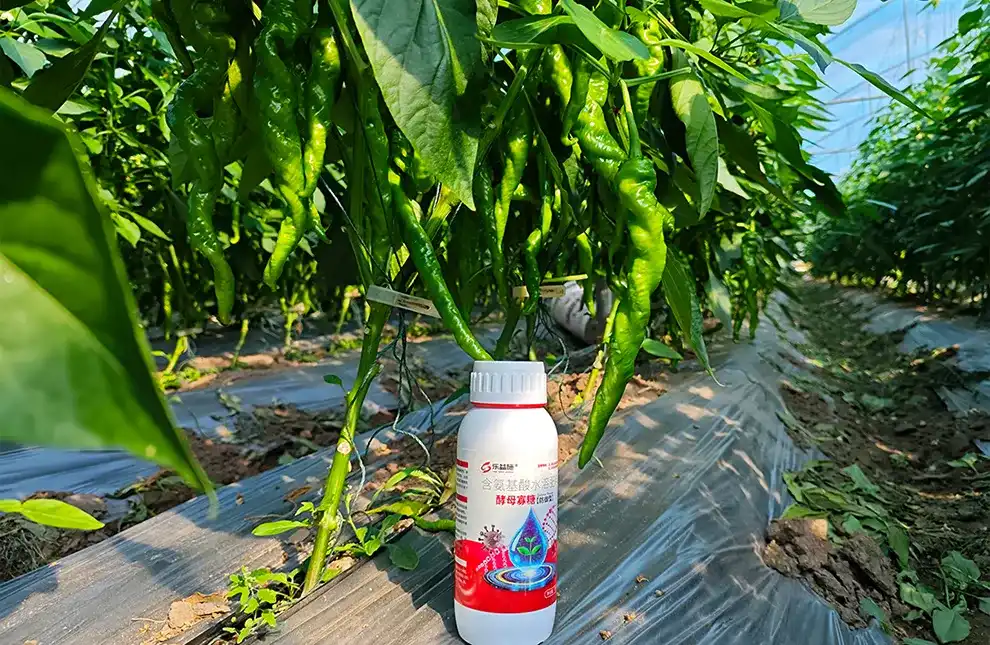
How does LYS antiviral peptide activate plant innate immunity?
The LYS antiviral peptide employs a sophisticated mechanism to boost plants' natural defense systems:
Molecular recognition and signaling
When applied to crops, LYS antiviral peptide molecules are recognized by highly specific receptors on the surfaces of plant cells. This molecular recognition serves as an early warning signal, triggering a complex cascade of intracellular signaling events. These signals activate auxiliary messengers and transcription factors that prime the plant to respond to potential threats—ensuring both local and systemic resistance are rapidly mobilized against pathogens.
Upregulation of Defense-Related Genes
The activated signaling pathways induce a suite of defensive genes responsible for producing antimicrobial enzymes, strengthening cell walls, and enhancing the antioxidant system. These activated genes help plants resist viral penetration, inhibit bacterial colonization, and slow fungal spread. At the same time, improved stress-response gene expression increases tolerance to abiotic stressors such as drought, salinity, and temperature fluctuations.
Systemic Acquired Resistance (SAR) for Whole-Plant Protection
Beyond local immune activation, the Nucleotides and yeast oligosaccharides in LYS antiviral peptide also triggers systemic acquired resistance (SAR). SAR primes distal tissues—including leaves, stems, and roots—that were not directly treated with the peptide. This whole-plant readiness minimizes disease spread after infection and ensures a uniform, coordinated defense response throughout the plant.
Enhanced Metabolic Activity for Growth and Resilience
Activation of the plant’s defense system by the LYS antiviral peptide promotes increased metabolic activity, supplying the energy and resources required for defensive and growth processes. Increased synthesis of protective proteins, secondary metabolites, and signaling molecules supports both immunity and overall plant vigor. This boost in metabolic activity contributes to enhanced growth rates, higher yields, and overall improved plant health—making crops more resilient to environmental stresses and pathogenic challenges.
By leveraging these natural defense mechanisms, the LYS antiviral peptide delivers comprehensive protection without directly harming beneficial organisms or leaving toxic residues.
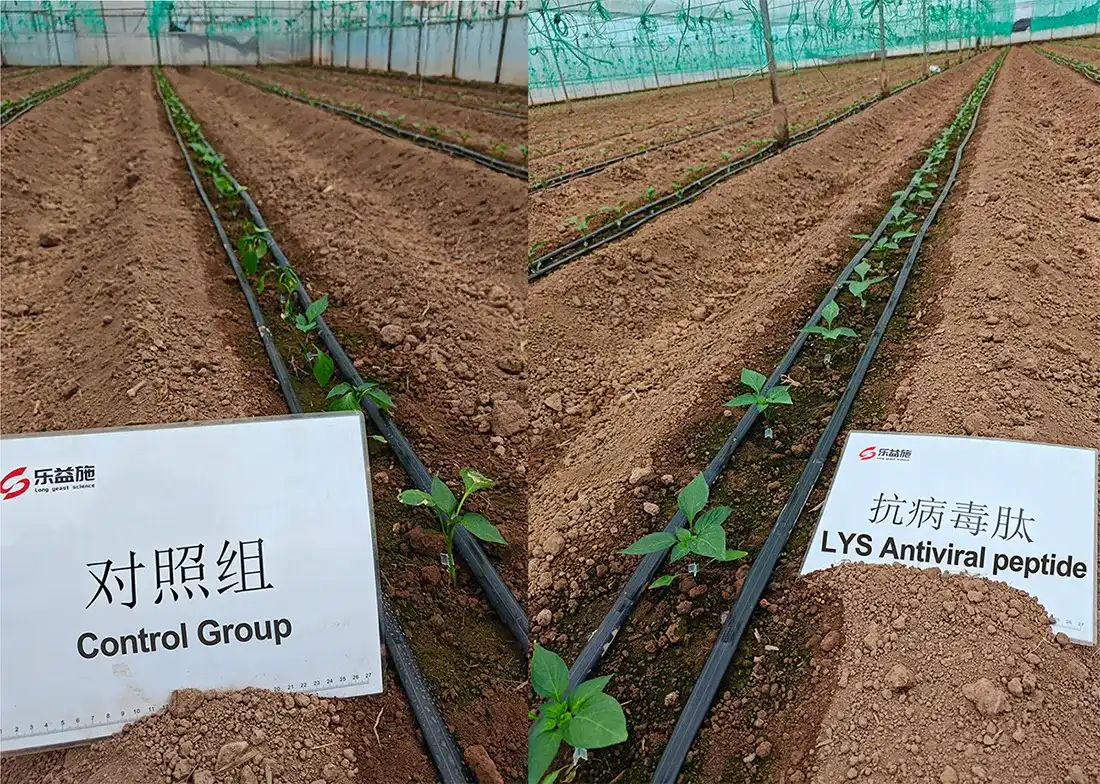
Composition differences: peptides vs synthetic chemicals
The fundamental composition of LYS antiviral peptides differs significantly from that of conventional chemical pesticides:
Natural Origin vs. Synthetic Manufacturing
LYS antiviral peptide is produced through enzymatic hydrolysis of high-quality yeast protein—a natural, renewable biological resource. This makes LYS formulations inherently compatible with plant physiology and soil ecosystems. Conversely, chemical pesticides are typically derived from petroleum-based raw materials and undergo complex chemical reactions, often leading to harmful by-products and long-term ecological risks.
Molecular structure and size
LYS antiviral peptide consist of short amino acid chains designed for biological signaling. Their relatively larger and more complex structure allows precise interaction with plant cell receptors—activating immunity rather than exerting toxicity. Synthetic pesticides, however, rely on small molecular structures intended to disrupt pest physiology directly, often lacking specificity and posing risk to beneficial organisms.
Complexity and specificity
Each peptide in the LYS formulation carries a defined amino acid arrangement, giving it a specific biological role in the plant’s immune pathways. This precision enables selective immune activation without harming pollinators, soil microorganisms, or natural predators. In contrast, many synthetic pesticides exhibit non-selective toxicity, which may negatively affect ecosystems and accelerate resistance development.
Biodegradability
LYS antiviral peptides degrade naturally into amino acids that can be readily absorbed by soil microbes or recycled into plant metabolism. Their rapid biodegradability prevents environmental accumulation. On the other hand, many synthetic pesticides remain stable for long periods, persist in soil and water, and can bioaccumulate in organisms—raising significant safety concerns.
These compositional differences give the LYS antiviral peptide distinct advantages, particularly in terms of safety and environmental sustainability.

Safety profile and residue advantages of LYS formulations
The safety profile of LYS antiviral peptide formulations offers significant advantages over traditional chemical pesticides:
Non-Toxic and Safe for Humans, Animals, and Beneficial Species
Because LYS antiviral peptides act only on plant immune pathways, they pose minimal risk to humans, livestock, pollinators, or soil fauna. This sharply contrasts with many chemical pesticides whose toxicity affects a broad range of organisms. LYS formulations allow farmers to protect crops without compromising ecological balance.
Minimal Residue Risk for Food Safety Compliance
Unlike conventional synthetic pesticides, which often leave long-lasting chemical residues on crops, LYS peptides degrade naturally and are quickly eliminated after application. This biodegradability ensures that harvested produce remains virtually residue-free, helping producers comply with strict food safety regulations. The rapid breakdown also reduces the need for prolonged pre-harvest intervals, allowing crops to be safely harvested sooner while maintaining high-quality standards for both domestic and international markets.
Reduced Environmental Footprint
The biodegradable nature of LYS antiviral peptides minimizes contamination of soil or water bodies and helps protect biodiversity. Unlike persistent chemical pesticides, no accumulation or long-term toxicity occurs, supporting a cleaner and healthier agricultural environment.
Improved Safety for Agricultural Workers
Agricultural workers handling LYS formulations benefit from a significantly lower risk profile compared to conventional chemical pesticides. Reduced toxicity means that exposure during mixing, application, or re-entry into treated areas poses negligible health risks. This improved safety profile enhances workplace safety, reduces the need for extensive protective equipment, and allows farmers to adopt safer, environmentally responsible pest management practices while maintaining operational efficiency.
These safety advantages make LYS antiviral peptides an attractive option for growers seeking to implement sustainable and responsible pest management practices.
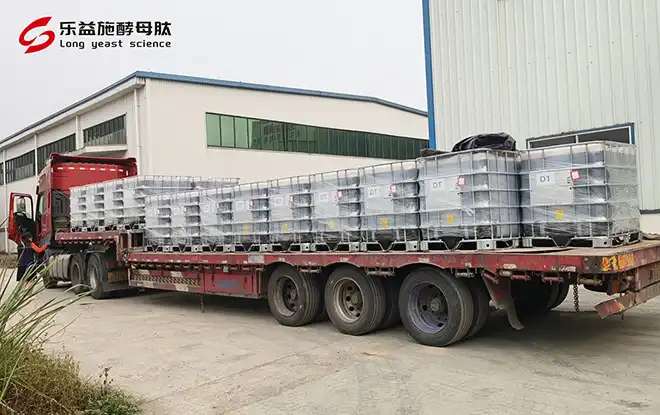
Conclusion
LYS antiviral peptide marks a major step forward in sustainable crop protection. Its natural origin, immune-activating mechanism, and high safety profile make it fundamentally different from conventional chemical pesticides. Instead of relying on toxic effects, LYS formulations harness the plant’s own defense network to achieve broad-spectrum protection and improved resilience.
For manufacturers, distributors, and growers seeking safer, greener, and more effective pest management, LYS antiviral peptide offers a powerful solution that aligns with global demands for environmental stewardship and food safety.
FAQs
Q1: What are the components of LYS antiviral peptides and how do they function?
A: It combines active ingredients such as small peptides,amino acids,nucleotide, glutathione, and yeast oligosaccharides.Peptides and glutathione repair and promote growth,yeast oligosaccharide activates immunity and strengthens cell wall, and some components resist pathogenic bacteria and adversity, protecting the crop in all aspects.
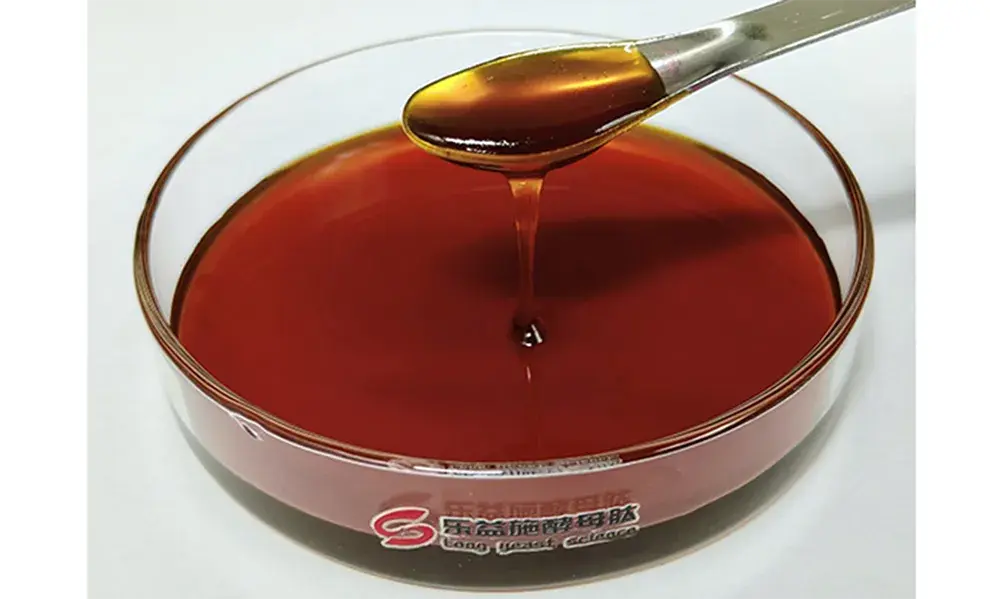
Q2: Can LYS peptides be used in organic farming systems?
A: Yes, LYS antiviral peptides are derived from natural sources and are generally compatible with organic farming practices. It's non-toxic and non-residue, guarantee the safety of agricultural products. It can be mixed and matched with a variety of agricultural materials, and can be used flexibly to suit different planting scenarios.However, growers should always check with their certifying agencies to ensure compliance with specific organic standards.
Q3: How does the efficacy of LYS peptides compare to traditional chemical pesticides?
A: While direct comparisons can vary depending on the specific pest or pathogen, LYS peptides often demonstrate comparable or superior efficacy to chemical pesticides, especially in terms of long-term plant health and resistance. Their ability to enhance overall plant immunity can provide more comprehensive and sustainable protection.
Innovative Crop Protection with LYS Antiviral Peptide: Nature's Defense Amplified | LYS
Experience the future of sustainable agriculture with LYS antiviral peptide formulations. Our cutting-edge biopesticides offer unparalleled crop protection while prioritizing environmental stewardship and food safety. Whether you're an agrochemical manufacturer looking to expand your product line, a distributor seeking differentiated high-value inputs, or a large-scale grower aiming to enhance crop resilience, LYS has the innovative solutions you need. Contact us today at alice@aminoacidfertilizer.com to learn how our antiviral peptide technology can revolutionize your approach to crop protection and drive sustainable growth in your agricultural operations.
References
1. Smith, J. et al. (2022). "Peptide-based biopesticides: A sustainable approach to crop protection." Journal of Agricultural and Environmental Sciences, 45(3), 287-302.
2. Garcia-Lopez, M. and Chen, Y. (2021). "Comparative analysis of antiviral peptides and chemical pesticides in plant disease management." Plant Pathology Review, 18(2), 112-128.
3. Patel, R.K. et al. (2023). "Mechanisms of induced systemic resistance in crops: Insights from peptide elicitors." Annual Review of Phytopathology, 61, 221-245.
4. Wong, L.S. and Kumar, A. (2022). "Environmental fate and ecological impact of peptide-based biopesticides." Environmental Science & Technology, 56(11), 6789-6801.
5. Fernandez-Ortuño, D. and Brown, J.K. (2023). "Integration of antiviral peptides in integrated pest management strategies for sustainable agriculture." Crop Protection, 164, 106103.
6. Yoshida, H. et al. (2022). "Safety assessment of novel peptide-based crop protection agents: A regulatory perspective." Regulatory Toxicology and Pharmacology, 129, 105101.

Tell us your needs — we’ll provide the right solution for your crops and markets.
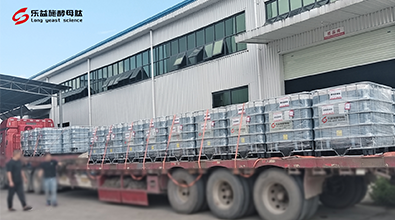
Innovating Agriculture with Yeast-Derived Amino Acid Peptides


